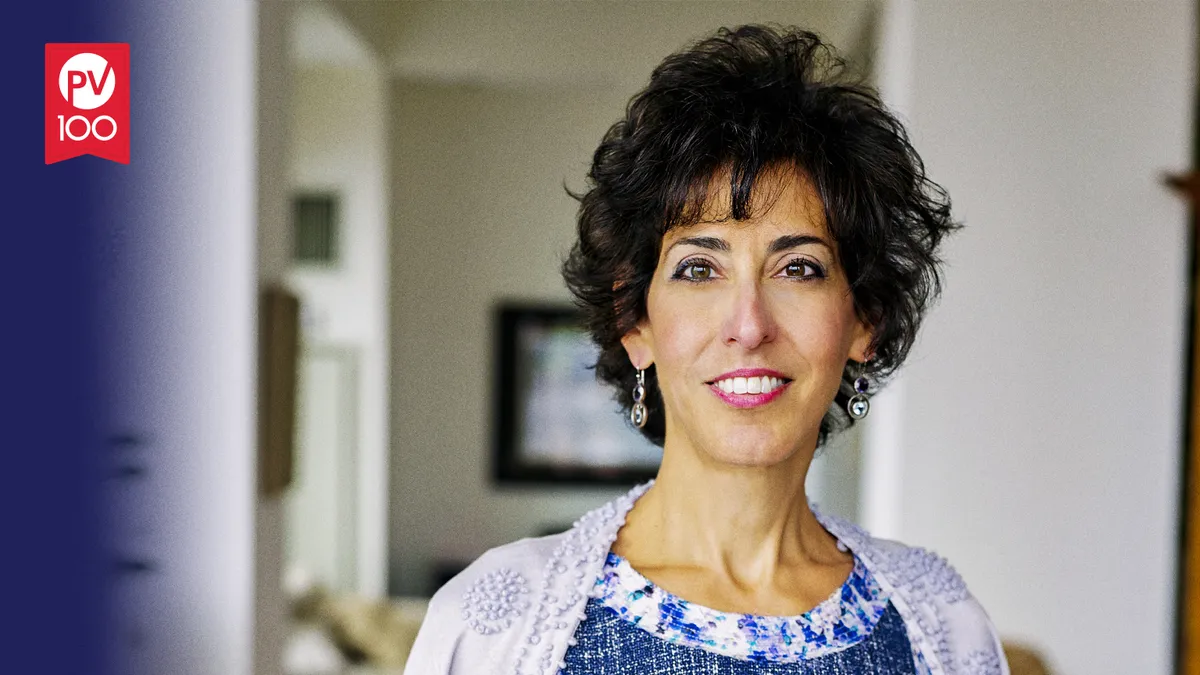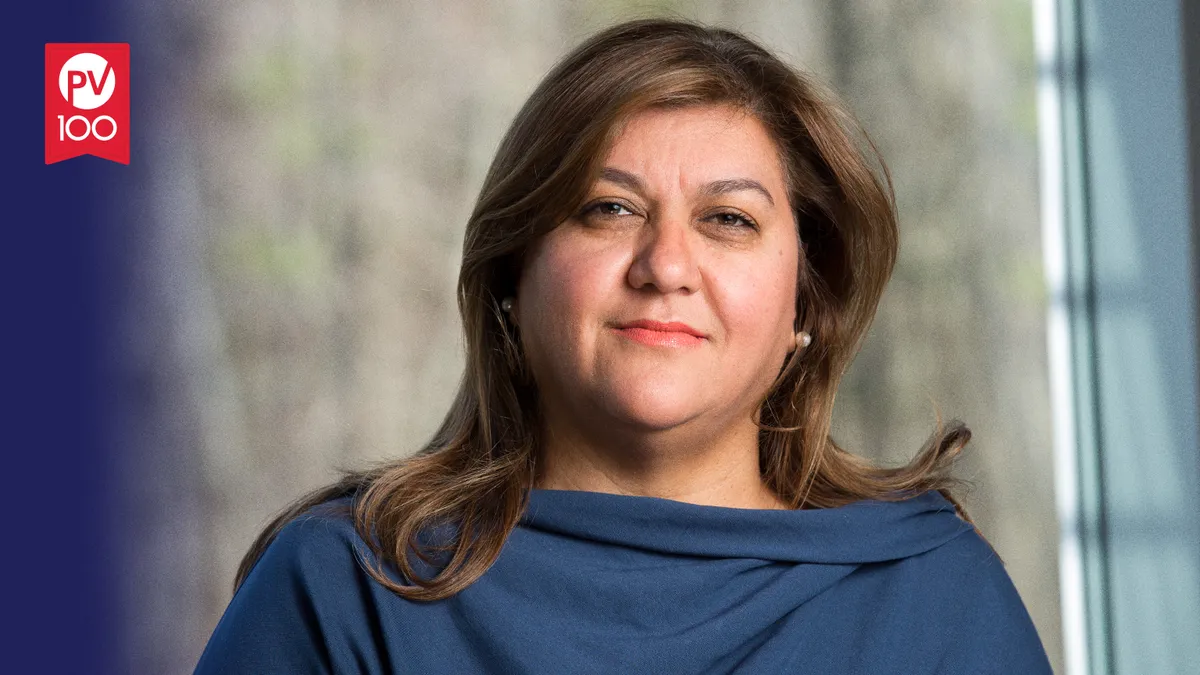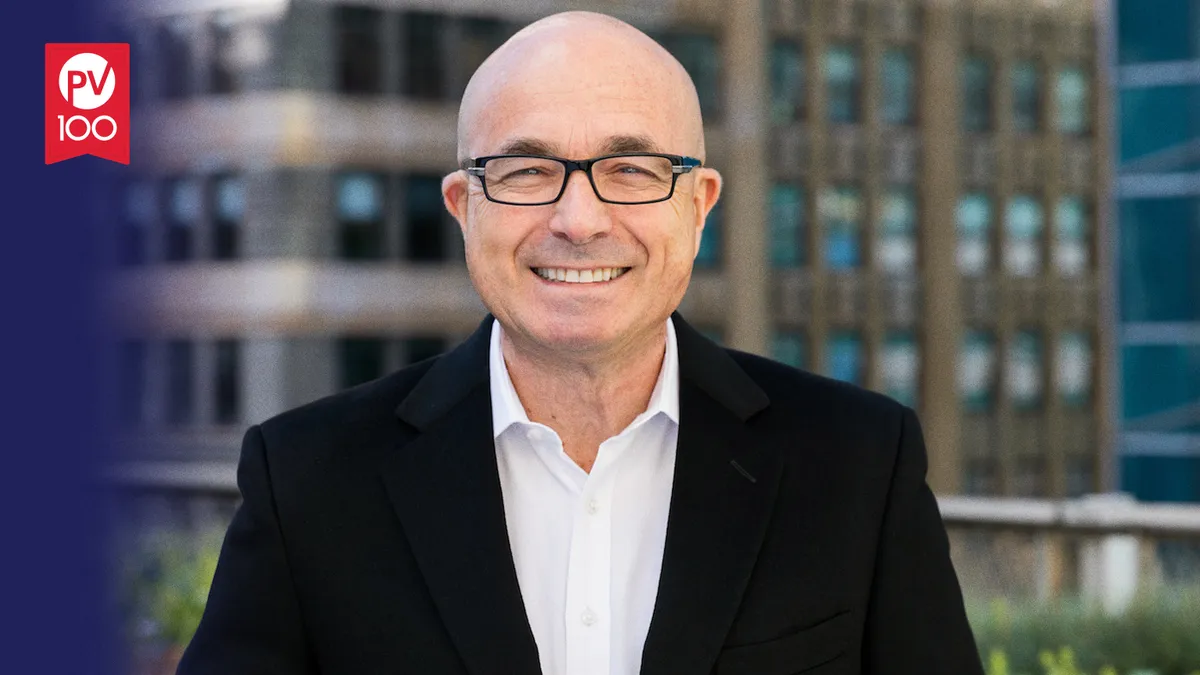Editor’s note: This story is part of our 2023 Red Jacket awards feature.
For Adele Gulfo, the secret to launching a blockbuster drug isn’t about hiring sales reps or throwing money at direct-to-consumer advertising. The answer is much simpler: Listen to the science and “understand the value” of the product you’re selling.
The two-time PharmaVoice 100 honoree and 2023 Red Jacket winner learned those lessons early in her career while helping launch Lipitor, one of the biggest blockbuster drugs of all time, at Parke-Davis, then the oldest and largest drugmaker in the U.S.
Although the all-time sales of the cholesterol-lowering medication have surpassed $160 billion, bringing Lipitor to market was no easy task. At the time, the drug was entering a crowded class of statins, including Merck & Co.’s Zocor and Bristol Myers Squibb’s Pravachol, which already had robust sales and advertising forces.
To differentiate the drug against those “mega brands,” Gulfo’s team “had to think strategically,” she said. So, they focused on the science, working with drug developers to conduct studies of Lipitor — including one on patients with high cholesterol, diabetes, hypertriglyceridemia and a rare chromosomal disorder called homozygous FH. The bet was that if Lipitor could treat even the most challenging patients, it would work on any person who walked into a doctor’s office, Gulfo said. And because other manufacturers were ignoring the patient populations Parke-Davis studied, Guflo’s team was able to create a whole new value proposition for Lipitor.
"We have to put the patient at the center of all decisions. And when you put the patient first, it helps you to prioritize your next move."

Adele Gulfo
CEO, biopharma commercial unit, Sumitomo Pharma America
The bet paid off. And since then, Gulfo has applied those same patient and science-focused tactics while leading commercialization for some of the world’s biggest drug brands. At AstraZeneca, she grew the cholesterol-lowering medication Crestor to more than $2 billion in sales in 2009, and at Pfizer’s U.S. primary care business, Gulfo led a $13 billion portfolio as president and general manager.
Through it all, Gulfo said she has stayed focused on answering two central questions: What is the science telling us and how can that be used to solve patients’ needs?
Most recently, as CEO of the biopharma commercial unit at Sumitomo Pharma America, she’s applied those questions while advancing the use of technology and data analytics not only in drug development, but on the commercialization side to better market therapies to patients, physicians and payers.
Using its advanced analytic platforms, the company aims to bring breakthrough treatments to a range of therapeutic areas including psychiatry, neurology, oncology, urology, women’s health, rare disease and more.
Here, Gulfo discusses why she believes integrating tech is the next frontier for pharma commercialization, why the payer is an integral part of any marketing strategy and how she’s continuing to “leverage the science” at Sumitomo.
This interview has been edited for brevity and style.
PHARMAVOICE: You’re a big proponent of leveraging technology for commercialization. How are you using tech at Sumitomo?
ADELE GULFO: Inside Sumitomo we have a group that is hugely advanced as it relates to analytics and helping to understand markets and patients, and how you target a physician segment or patient segment. For instance, we have a drug for uterine fibroids and endometriosis. And women with the condition are on a spectrum. There are some women with endometriosis that are managing it with over-the-counter painkillers. There are some women who need oral contraception, so we need to figure out who are the women who need our medicine. Utilizing advanced data and analytics helps us get the right message to the right patient and the right prescriber so we can solve for the unmet need.
Where do you see as the future of advanced analytics in the life sciences industry?
I talked about commercialization, but also think about developing clinical trials. You can scrub the literature and ask ChatGPT “show me all the trials that studied endometriosis in this population of women and had this result” and it could. There's so much more that advanced analytics can do to help us refine our thinking and make us more efficient. For clinical development, we can recruit patients earlier, we can learn who the prescribers are and we can get to market faster. And by doing it, we save the healthcare system money. I think ultimately, using advanced data and analytics will help us to improve the overall cost equation of health care and bringing medicines to patients.
What challenges does the industry need to overcome to better reach patients?
We still have a big challenge where patients don't take their medicines. We call it patient persistency. If you start a chronic hypertension medication and you need to stay on that medicine long term, the challenge we have is making sure you internalize the need for the medicine. When we educate patients and explain what you're taking and its benefits, you have a much higher likelihood of staying on your therapy.
Sumitomo describes its approach as patient focused. What does that mean to you?
In our industry, we have to put the patient at the center of all decisions. And when you put the patient first, it helps you to prioritize your next move. Whether that be how I spend my next commercial dollar, or how I invest my R&D dollars. If there are patients who still have an unmet medical need, then we know we have an opportunity to help that patient, however small it is.
How does the payer fit into the access equation?
The important thing is before the product is launched, you need to have a medical conversation with the payers in advance so they can prepare and understand the value of the product. For example, we have a product for prostate cancer. During COVID-19, patients didn't want to go into the physician's office. And today, when you need to get an injection for what's called ADT, or androgen deprivation therapy, for prostate cancer, you go to the office to get an injection. Well, our drug is an oral medicine and you can take it at home without having to go into the physician. So when we spoke to payers, we made sure the payer understood that patients are going to want an oral versus an injection. We have to educate them on what the clinical attributes and patient benefits are. And that's why you get to the payer early.
How are you working to overcome patient access barriers at Sumitomo?
I can't inform a 65-year-old male with prostate cancer the same way I want to inform a 25-year-old with endometriosis. So the first thing is understanding your audience. How I reach the younger [patients] will look very different than putting something on the fishing channel because maybe that's where I'll catch the patient with prostate cancer. And that's why we use advanced analytics and data to help us figure out what zip codes, what patients, what demographic, etc. They help us get the message to the right patient at the right time.
See our full list of 2023 PharmaVoice 100 winners.

















